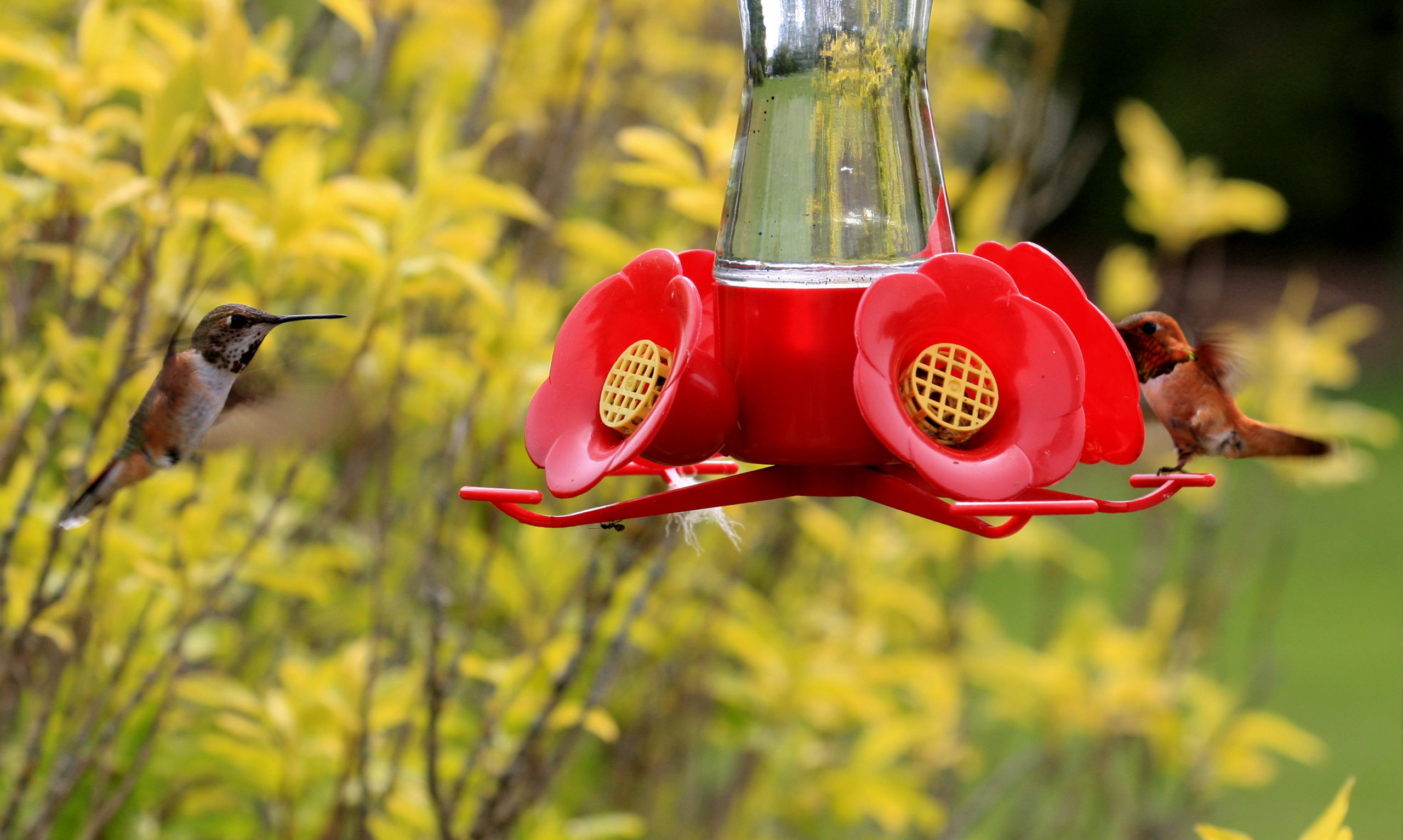Support Us
Since 1979 more than 140,000 animals have been treated by Wildlife Rescue.
Thanks to the support of individuals like you, Wildlife Rescue can provide a lifeline for animals in distress.
 BBC Discover Wildlife Feature Wildlife Rescue is featured in the BBC Discover Wildlife Spring 2024 issue. The article gave an inside look into the Wildlife Hospital. Subscribe to the magazine here. Read More
BBC Discover Wildlife Feature Wildlife Rescue is featured in the BBC Discover Wildlife Spring 2024 issue. The article gave an inside look into the Wildlife Hospital. Subscribe to the magazine here. Read More
 If you decide to offer a hummingbird feeder, it's essential for the birds’ safety to maintain it following the recommended guidelines all year round. The best food for hummingbirds Hummingbirds have the highest metabolism of any warm-blooded animal. A high... Read More
If you decide to offer a hummingbird feeder, it's essential for the birds’ safety to maintain it following the recommended guidelines all year round. The best food for hummingbirds Hummingbirds have the highest metabolism of any warm-blooded animal. A high... Read More
Hummingbirds – a crowd favourite, miniature acrobats that dart and dip, hunting for high-energy foods.
Although these tiny birds weigh less than a loonie (averaging between 3 and 6 grams), hummingbirds need to be almost constantly eating. Hummingbirds flap their wings 50 times or more per second in order to maintain their signature hovering flight. Undoubtedly, this requires an immense amount of energy. In order to fuel their flight, hummingbirds consume half their body weight in pure sugar every day!
Read MoreEvery year, signs of spring fill the air as we feel the temperatures lifting, hear the chorus of year-round and migratory birds returning and the smell of fresh green grass as we step outside. It’s the perfect time to welcome this revitalizing energy into your backyard by preparing for these feathered friends.
In British Columbia Chickadees, Sparrows, Starlings, Robins, Northern Flickers, Bushtits, Finches, Steller’s Jay and Hummingbirds are a few of the common backyard birds looking for mates and shelter to thrive during the busy season.
Read MoreHummingbird feeders are a great way to observe these beautiful birds while providing them a source of energy! Feeders can be especially important to Anna’s Hummingbird, a species that stays throughout the year, and to other species that may be delayed in their migration. While it may seem like a simple thing, hummingbird feeders require more attention than just filling them with sugar water.
Read MoreIdeally, all hummingbird feeders should be taken down in September of each year before migration begins. Leaving feeders up will not discourage migration, as hummingbirds that migrate are instinctually driven to do so, however; it can alter their behaviors. In some cases, these feeders are left up unknowingly and without proper care, which can ultimately lead to the fungal infections, starvation and death of the hummingbirds which have become dependent on them for survival.
Read MoreHummingbirds need to feed almost continuously. It may surprise you that such a small animal, who weighs about the size of a loonie, has a high demand for food. Hummingbirds can consume half their weight every day. Nectar fuels hummingbird’s metabolism – the highest of an endothermic animal on earth. It’s best to provide flowering plants that produce nectar in the spring and summer. If flowers aren’t an option, then a feeder can be supportive. Here is an easy-to-follow recipe for your hummers!
Read MoreOne of the clearest signs of spring is the reappearance of migrating birds and readily available sources of food including seeds, insects, and fruit. Migrating birds return to their breeding grounds early spring and midsummer to reproduce. They tend to find trees, rooftops, wetlands, and ponds to prepare for their nesting season.
Read MoreAssess the circumstances when you first notice a baby. Take note of their energy levels and behavior to distinguish if this bird needs your help or if it should be left alone. If it is a hatchling or appears weak and quiet, it may need help. Birds parents will leave their young to collect food or water and return shortly.
Read MoreHummingbirds need to eat A LOT, almost constantly. It may surprise you that such a small species who weighs about the size of a loonie has a high demand for food sources. Hummingbirds can consume half their weight in pure sugar every day. Nectar fuels hummingbird’s metabolism – the highest of an endothermic animal on the earth. Although these food sources are readily available in the spring and summer, winter becomes challenging. Insects and nectar-bearing flowering plants are scarce during freezing temperatures.
Read More